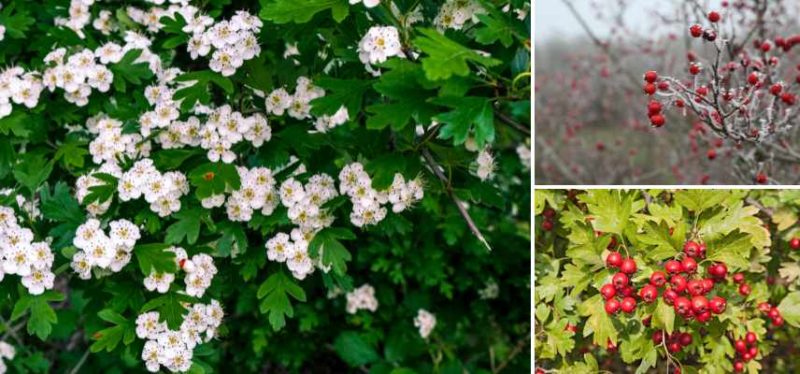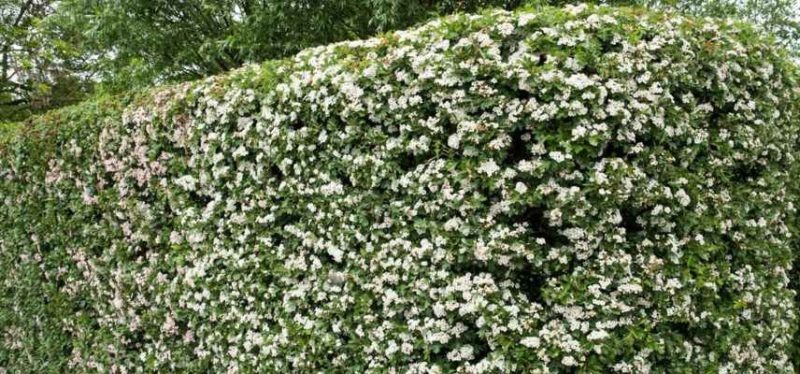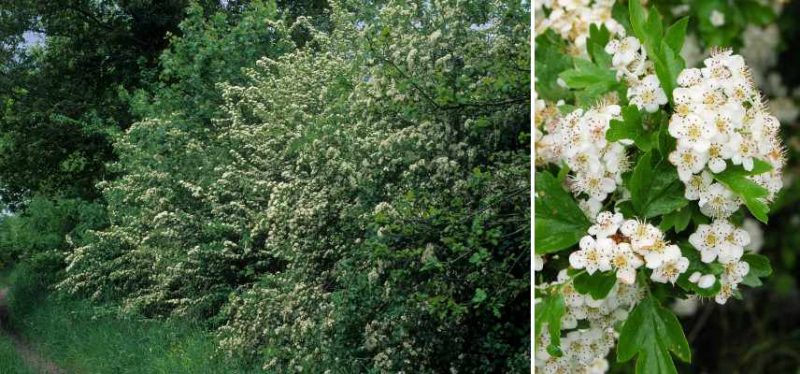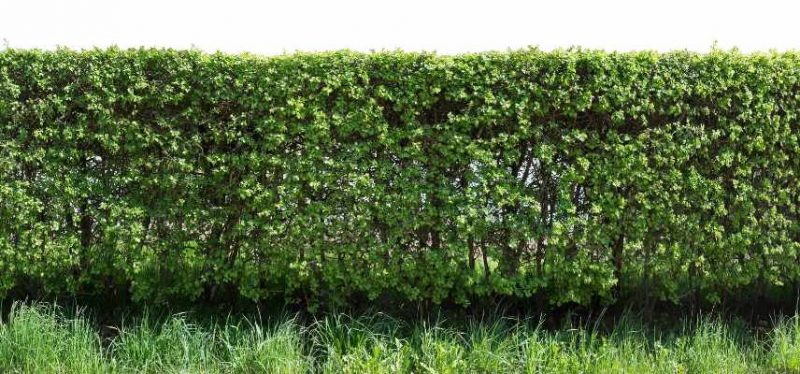Hawthorn or Crataegus in Latin is a large bush with a dense, bushy habit ideal for country hedges and defensive hedges thanks to its thorny shoots and green foliage that remains for a long time before falling. It can prove semi-evergreen in regions where winter temperatures do not fall below -5°C. It rarely exceeds 6 m in height for 4 m span. Particularly hardy, long-lived and undemanding, it is one of the easiest flowering bushes to succeed with in most of our regions. It rewards us with a delicate and generous spring flowering, white or pink, followed by very decorative fruits in red, yellow or blue resembling small apples. Hawthorn grows in sun or partial shade and copes with almost any well-drained soil, poor calcareous soil, or even clay.
Discover our advice on when and how to plant a hawthorn hedge.

Which hawthorn variety to choose?
All hawthorns have a bushy, dense habit and are perfect for forming a loose or formal hedge as they tolerate pruning very well. White flowers on Crataegus laevigata and Crataegus lavallei ‘Carrierei’, pink flowers on Crataegus laevigata ‘Rosea Flore Pleno’ and Crataegus Paul's Scarlet, you will find a wide choice of varieties with single or double flowers, often fragrant and in various colours, depending on species or cultivar.
→ Find all our hawthorn varieties here

When to plant a hawthorn hedge?
Hawthorn is preferably planted in autumn from September to November to help establishment and rooting. As this bush bears deciduous foliage, it can be planted as bare roots between October and February–March, outside periods of frost or snow and avoiding waterlogged soils, before bud burst period in spring. Hawthorns offered in containers can be planted at any time of year, except during droughts, excessively wet periods and frosts.

Where to plant hawthorn?
Its great hardiness down to -20 °C and well beyond allows planting in all regions, even the coldest. Resistant to pollution and sea spray, it is an excellent choice for town gardens or coastal locations. A sunny or partially shaded position suits it. Hawthorn adapts to almost any situation, except deep shade.

Which soil for hawthorn?
This is an undemanding bush that is content with any well-drained soil, even calcareous or clayey. It only requires good drainage.
How to plant a hawthorn hedge?
Necessary equipment:
- Thick gloves and long clothing to protect against thorns
- Spade, fork, pick to prepare and dig soil
- A large bucket
- A ready-to-use pralin or homemade mix
- A pruning shear to trim roots
- Well-rotted compost
- A garden line
Planting distance:
Keep a distance of 80 to 100 cm between each hawthorn plant.
Planting steps
Before planting:
We recommend preparing ground a few weeks before planting.
- Define hedge location and mark limits with a garden line
- Prepare soil well: remove weeds, break up compacted soil deeply with a fork, remove stones
- Dig a trench or several holes large enough to spread roots
- If soil is heavy, add some garden sand to improve drainage
- Amend each planting hole with well-rotted compost to encourage establishment
Planting a hawthorn as bare roots
It should be transplanted as soon as possible after receipt. Start by trimming and pralining the roots:
- With a sharp, disinfected pruning shear, cut back overly long roots and remove dried or damaged parts
- Coat roots with a homemade pralin (mixture of soil, manure and water) or with a ready-to-use pralin
- Dig trench or holes twice root volume (about 60 cm each way)
- Place hawthorn in centre of hole, collar at soil level and spread roots
- Plant in mix of garden soil, compost or planting compost
- Water
- Firm soil lightly and spread a layer of mulch
- If necessary, stake bush with tree ties
→ Follow our advice to praline roots of trees and bushes and on dressing roots
Planting a hawthorn in buckets or containers
- Soak pots by immersing them in a bucket of water for 1 hour to moisten rootballs
- Pot out shrubs and tease rootballs gently
- With a spade, dig holes twice rootball volume every 60 cm to 1 m or dig a trench
- Add a drainage layer at bottom of each hole
- Mix excavated soil with some well-rotted compost
- Position rootballs upright at bottom of holes
- Backfill
- Firm with foot
- Water thoroughly and add a layer of mulch around each hawthorn
For a defensive hedge
Hawthorns planted in numbers eventually form thorny, virtually impenetrable thickets over the years.
- Dig two staggered rows spaced 40 to 50 cm apart and twice as wide as rootballs
- Do not hesitate to prune hard at planting: cut plants back to about 40 cm height to encourage branching
How to maintain a hawthorn hedge?
Water regularly during first two years after planting and during prolonged summer droughts. Keep soil cool during hot spells. Use a good organic mulch or plant groundcover perennials at hawthorn feet.
How to prune a hawthorn hedge?
Pruning is only necessary if you want a formal hedge. Hawthorn tolerates severe pruning. If pruning, do so after flowering in June or July. In a more natural hedge, let your hawthorn grow freely and simply shorten overly long shoots at late winter in February–March to maintain balanced habit.

Further reading
- Discover our hawthorns at the nursery.
- Our advice sheet: How to associate hawthorns
- More advice in our sheet How to plant a hedge?
































Comments